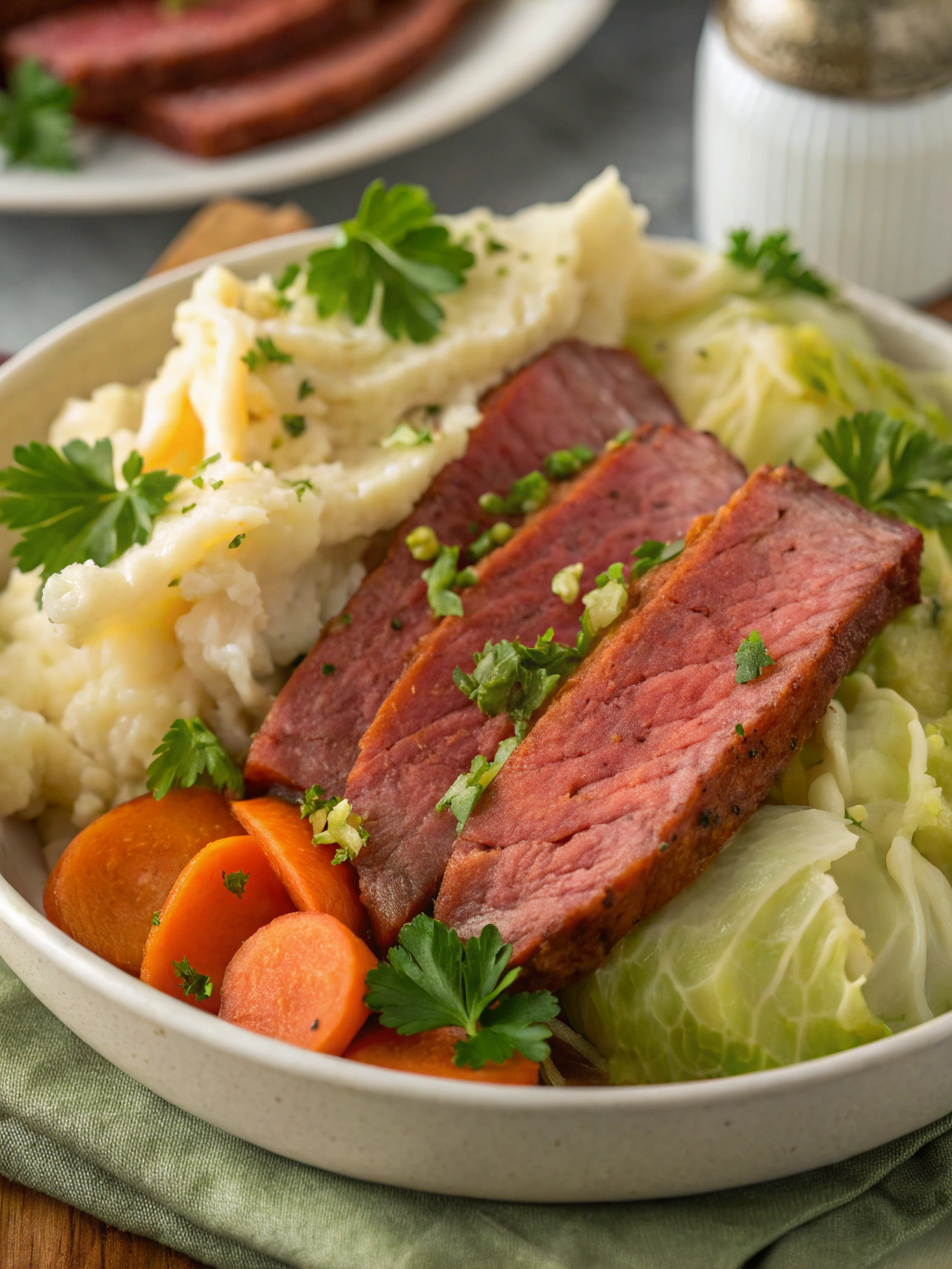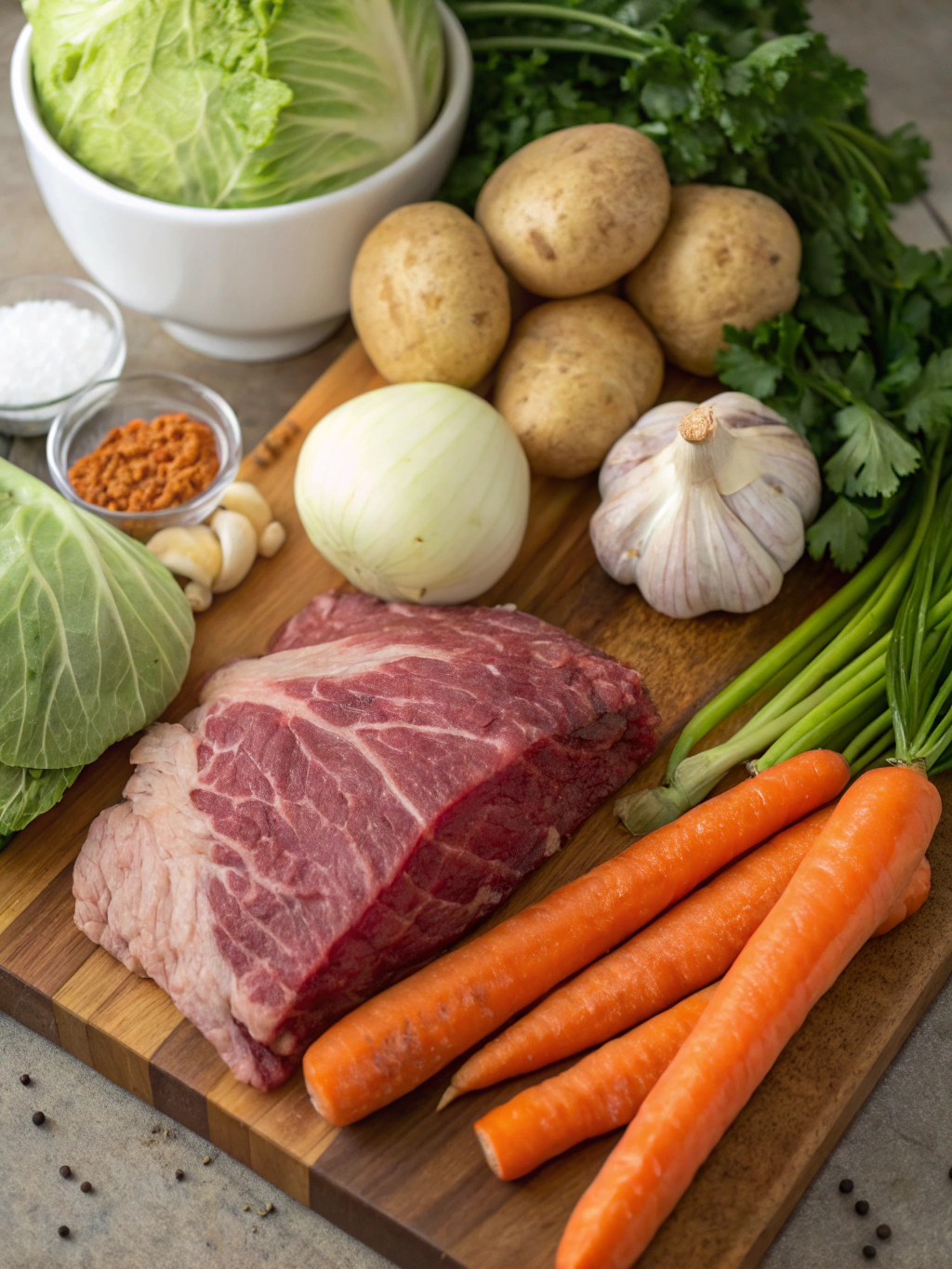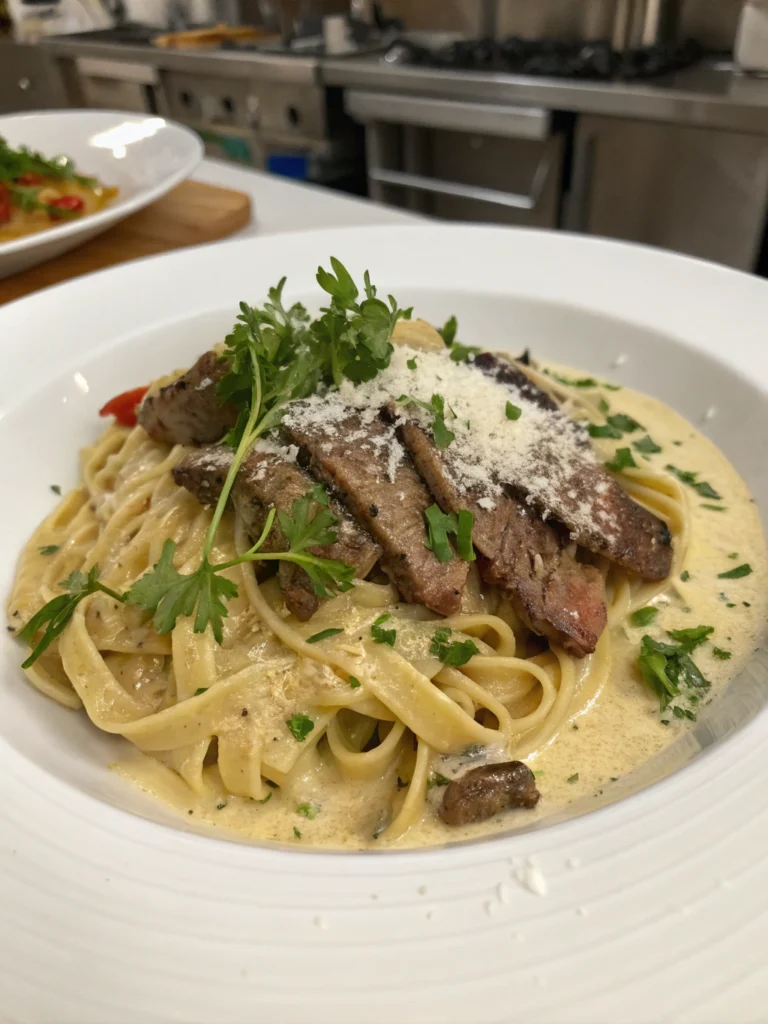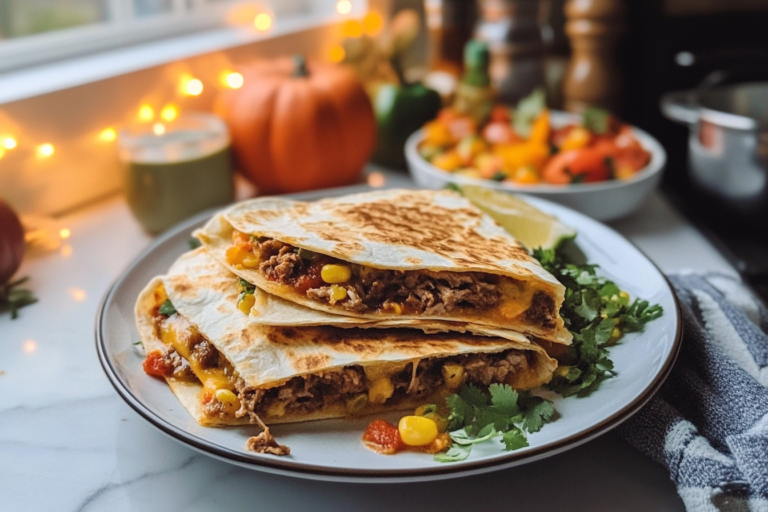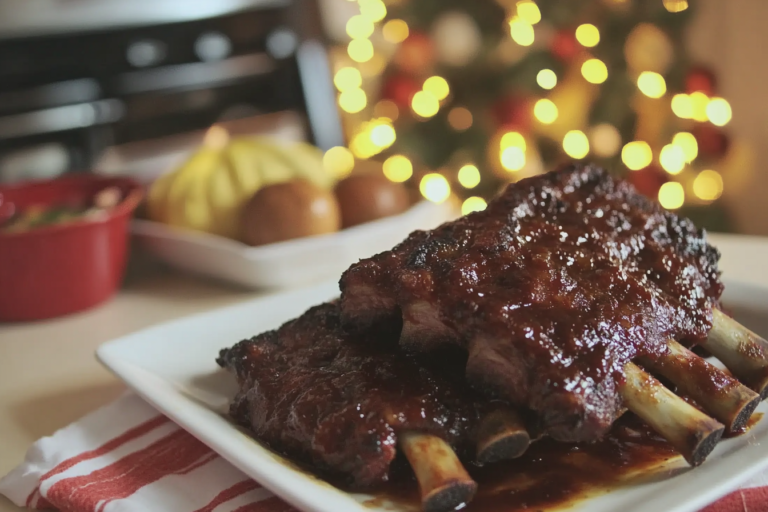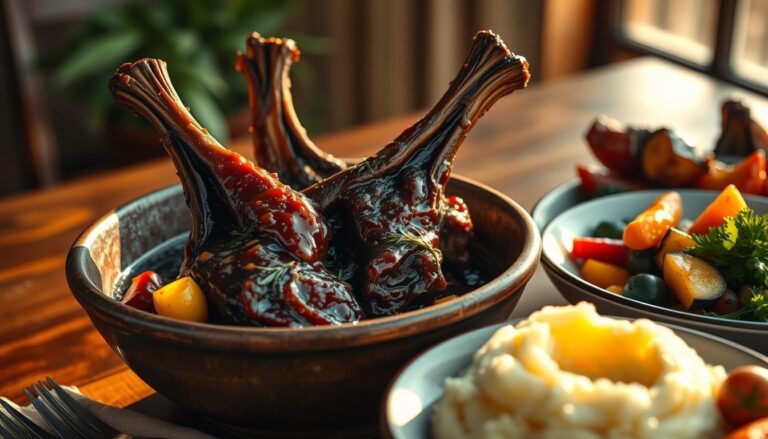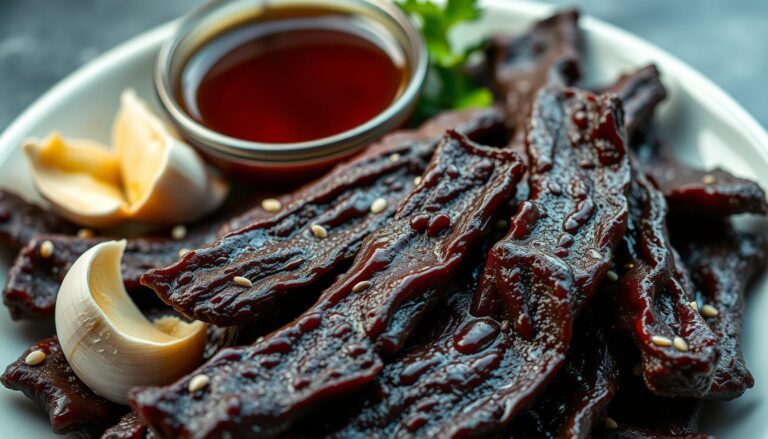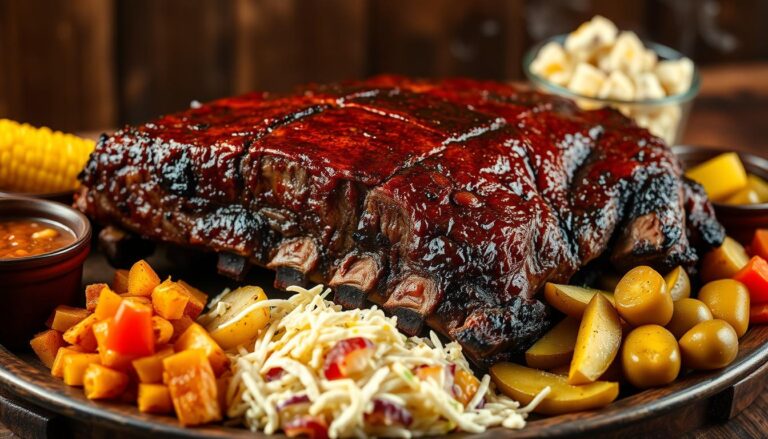Corned Beef and Cabbage
A tender, flavorful Irish-American tradition that combines perfectly seasoned beef brisket with hearty vegetables. This one-pot meal delivers rich savory flavors and melt-in-your-mouth texture that makes it perfect for St. Patrick’s Day celebrations or a comforting family dinner any time of year.
Easy Corned Beef and Cabbage Recipe
There’s something incredibly satisfying about the rich aroma of Corned Beef and Cabbage filling your kitchen. This classic Irish-American dish has been a staple on dinner tables for generations, especially around St. Patrick’s Day. My homemade Corned Beef and Cabbage recipe takes this traditional dish and makes it accessible for any home cook, while maintaining all the flavors that make it so beloved.
What makes this recipe special is the perfect balance of tender, flavorful beef against the mild sweetness of cabbage and vegetables. The beef brisket slowly simmers until it’s fork-tender, infusing the cooking liquid with savory richness that flavors everything else in the pot. It’s a beautiful example of how simple ingredients, when treated with care, can transform into something truly memorable.
THIS RECIPE:
- Features perfectly tender corned beef with vibrant vegetables
- Uses a straightforward one-pot cooking method
- Creates its own flavorful broth during cooking
- Provides both traditional flavor and modern cooking guidance
| Recipe Details | |
|---|---|
| Prep Time | 20 minutes |
| Cook Time | 3 hours |
| Total Time | 3 hours 20 minutes |
| Servings | 6-8 people |
| Yield | One 3-4 pound dinner entrée |
This Corned Beef and Cabbage recipe brings restaurant-quality results with minimal effort. The slow cooking process means most of your time is hands-off, allowing you to prepare a magnificent meal without constant attention. The result is a hearty, complete dinner that delivers deep satisfaction with every bite. Even if you’ve never attempted this classic dish before, my detailed instructions ensure success from the very first try.
Ingredients for Corned Beef and Cabbage
The quality of ingredients makes all the difference in a simple, rustic dish like Corned Beef and Cabbage. Since this recipe has relatively few components, each one contributes significantly to the final flavor. I recommend seeking out a well-marbled beef brisket with a quality spice packet for the most flavorful result.
Main Ingredients:
- 4 pounds corned beef brisket (with spice packet)
- 1 large head cabbage (about 2-3 pounds), cut into wedges
- 2 pounds small red potatoes, halved or quartered
- 4 large carrots, peeled and cut into 2-inch pieces
- 1 large yellow onion, peeled and cut into wedges
- 4 cloves garlic, peeled and lightly crushed
- 2 bay leaves
- 10-12 cups water (enough to cover beef)
- 2 tablespoons pickling spices (if no spice packet included)
- 1 tablespoon brown sugar (optional)
- 2 tablespoons fresh parsley, chopped (for garnish)
Optional Horseradish Cream Sauce:
- 1/2 cup sour cream
- 3 tablespoons prepared horseradish
- 1 tablespoon Dijon mustard
- 1 teaspoon lemon juice
- Salt and pepper to taste
| Ingredient Category | Recommended Quantity | Quality Tips |
|---|---|---|
| Beef | 4 pounds | Look for flat cut brisket with good fat marbling |
| Vegetables | 2-3 pounds cabbage + 2 pounds potatoes + 1 pound carrots | Choose firm cabbage with tight leaves and waxy potatoes that hold shape |
| Aromatics | 1 onion + 4 garlic cloves | Fresh, firm aromatics provide better flavor |
| Seasonings | Spice packet or 2 tablespoons pickling spice | Whole spices provide better flavor than pre-ground |
When selecting your corned beef, you’ll typically find two cuts: the flat cut and the point cut. The flat cut is leaner and slices beautifully, while the point cut has more marbling and tends to be more tender. Either works well in this recipe, but I prefer the flat cut for its presentation and even cooking.
How to Make Corned Beef and Cabbage
Making homemade Corned Beef and Cabbage is primarily about gentle, slow cooking that allows the flavors to develop and the meat to become wonderfully tender. The process happens in stages, with the beef requiring longer cooking than the vegetables. This prevents the vegetables from becoming mushy while ensuring the brisket achieves that perfect, fork-tender texture.
Stage 1: Preparing and Cooking the Beef
- Rinse the corned beef brisket under cold water to remove excess salt from the surface.
- Place the brisket in a large Dutch oven or stockpot, fat side up.
- Add the spice packet contents (or 2 tablespoons pickling spices), bay leaves, garlic, and brown sugar if using.
- Pour in enough cold water to cover the brisket by 1 inch (about 10-12 cups depending on your pot size).
- Bring to a boil over high heat, then immediately reduce to a low simmer.
- Cover and simmer gently for 2½ hours, occasionally skimming any foam that rises to the surface.
Stage 2: Adding Vegetables
- After the beef has been cooking for 2½ hours, add the onions to the pot.
- Add the carrots and potatoes to the simmering liquid around the beef.
- Continue to simmer, covered, for another 15 minutes.
- Add the cabbage wedges to the pot, arranging them around the meat.
- Cover and cook for an additional 15-20 minutes, until all vegetables are tender when pierced with a fork.
Stage 3: Resting and Serving
- Carefully remove the corned beef from the cooking liquid and transfer to a cutting board.
- Let the meat rest for 10-15 minutes before slicing. This crucial step allows the juices to redistribute.
- While the meat rests, use a slotted spoon to transfer vegetables to a serving platter, keeping them warm.
- Slice the corned beef against the grain into ¼-inch thick slices.
- Arrange the sliced beef on the platter with the vegetables.
- Ladle a small amount of the cooking broth over the meat and vegetables.
- Garnish with freshly chopped parsley before serving.
Pro tip: The key to tender corned beef is maintaining a gentle simmer rather than a rolling boil. Too vigorous a boil will toughen the meat.
Tips for Making Corned Beef and Cabbage
My years of making this classic dish have taught me several valuable lessons that elevate a simple Corned Beef and Cabbage dinner to something truly special.
- Rinse before cooking – Always rinse your corned beef brisket thoroughly before cooking to remove excess salt from the curing process.
- Cook fat-side up – Position the brisket with the fat layer facing upward so it bastes the meat naturally during cooking.
- Maintain gentle heat – A bare simmer (not a rolling boil) is essential for tender meat.
- Stage the vegetables – Add vegetables at different times based on their cooking requirements to prevent overcooking.
| Technique | Recommendation | Reason |
|---|---|---|
| Heat Level | Gentle simmer only | Boiling toughens the meat fibers |
| Slicing | Always cut against the grain | Shortens the muscle fibers for tenderness |
| Vegetable Size | Cut vegetables into large, even pieces | Ensures even cooking and prevents disintegration |
| Seasoning | Taste broth before serving | The beef and spices add saltiness; adjust accordingly |
The cooking liquid becomes incredibly flavorful during this process. Consider straining and reserving some to use as the base for soup in the following days. The richness of this broth provides exceptional flavor to other dishes.
For more visually appealing cabbage, you can blanch it separately in the cooking liquid after removing the beef. This preserves its vibrant green color while still infusing it with all the wonderful flavors from the broth.
Make-Ahead Instructions
One of the beauties of Corned Beef and Cabbage is how well it can be prepared in stages, making it perfect for entertaining or busy weeknights when you need to split your cooking time.
Make-Ahead Beef (1-2 days ahead):
- Cook the corned beef completely through Stage 1 of the recipe.
- Cool the beef in its cooking liquid, then refrigerate together in an airtight container.
- When ready to serve, remove the solidified fat from the surface.
- Bring the beef and liquid back to a simmer for 15 minutes to reheat.
- Proceed with Stage 2 (adding vegetables) as directed in the recipe.
Prepare Vegetables in Advance (up to 24 hours):
- Peel and cut all vegetables as directed.
- Store potatoes in cold water in the refrigerator to prevent browning.
- Store prepared cabbage, carrots, and onions in separate containers or bags.
- When ready to cook, drain potatoes and pat all vegetables dry before adding to the pot.
The flavors of Corned Beef and Cabbage actually improve after a day in the refrigerator, making this an ideal dish to prepare fully in advance. Simply reheat gently on the stovetop with a splash of water or in a 325°F oven, covered with foil, until warmed through (about 25-30 minutes).
Storing Leftovers
Proper storage of leftover Corned Beef and Cabbage not only ensures food safety but also maintains the quality of this hearty dish for future meals.
For best results, separate the components before storing:
- Store sliced corned beef in a shallow, airtight container with a small amount of cooking liquid to keep it moist.
- Store vegetables separately in their own airtight container.
- Keep cooking liquid in a separate container for reheating or for use in other recipes.
All components should be refrigerated within two hours of cooking. When properly stored, leftovers will remain fresh and safe to eat for up to 4 days in the refrigerator.
When reheating, gentle heat is key. Microwave individual portions at 50% power with a splash of the reserved cooking liquid, or warm slowly in a covered skillet over medium-low heat. Alternatively, place the beef and vegetables in a baking dish, add a few tablespoons of cooking liquid, cover with foil, and heat in a 325°F oven until warmed through (about 15-20 minutes).
Pro tip: Leftover corned beef makes exceptional sandwiches on rye bread with Swiss cheese, sauerkraut, and Russian dressing (essentially a Reuben sandwich).
Freezing Corned Beef and Cabbage
While Corned Beef and Cabbage can be frozen for longer storage, the texture of the cabbage does change somewhat after freezing. The beef itself, however, freezes beautifully and can be a great make-ahead option.
For best results when freezing:
- Cool all components completely before packaging for the freezer.
- Slice the corned beef and wrap portions tightly in plastic wrap, then aluminum foil.
- Place wrapped portions in freezer-safe bags, removing as much air as possible.
- If freezing vegetables, store them separately from the meat.
- Freeze cooking liquid in ice cube trays, then transfer frozen cubes to freezer bags for portioned use.
- Label all packages with contents and date.
Frozen corned beef will maintain best quality for 2-3 months, though it remains safe indefinitely when kept at 0°F or below. The cooking liquid can be frozen for up to 6 months.
To thaw and reheat:
- Thaw meat and vegetables overnight in the refrigerator.
- Reheat beef slices in a skillet with a small amount of the cooking liquid, covered, over medium-low heat.
- Alternatively, place in a baking dish, add a few tablespoons of cooking liquid, cover with foil and warm in a 325°F oven until heated through.
Serving Suggestions
A traditional Corned Beef and Cabbage dinner is a complete meal on its own, but several accompaniments can elevate the experience and balance the rich flavors.
Traditional Accompaniments:
- Irish soda bread with salted butter
- Whole grain mustard or the homemade horseradish cream sauce (recipe in ingredients section)
- Additional boiled potatoes with parsley butter for hearty appetites
- A simple green salad with vinaigrette to brighten the plate
Beverage Pairings:
- Irish stout or dark beer complements the savory flavors perfectly
- Dry hard cider offers a lighter option with complementary flavors
- For non-alcoholic options, apple cider or sparkling water with lemon works beautifully
Serve this dish family-style on a large platter with the sliced corned beef at the center, surrounded by the colorful vegetables. Garnish with fresh parsley just before bringing to the table for a vibrant presentation. The ideal serving temperature is hot but not scalding, allowing the full flavors to come through.
For a complete Irish-American feast, consider adding colcannon (mashed potatoes with kale or cabbage) or champ (mashed potatoes with green onions) as additional sides.
FAQ
Can I make Corned Beef and Cabbage in a slow cooker?
Yes! Place the corned beef, spices, and water in a slow cooker and cook on low for 8-9 hours. Add potatoes and carrots during the final 3 hours and cabbage during the last hour of cooking.
What if my corned beef doesn’t come with a spice packet?
Make your own corned beef spice blend by combining 1 tablespoon each of whole black peppercorns and mustard seeds, 1 teaspoon each of whole cloves and allspice berries, 1/2 teaspoon of coriander seeds, 2 bay leaves, and 1 cinnamon stick (broken). Alternatively, use 2 tablespoons of pre-mixed pickling spice.
Can I add beer to the cooking liquid?
Absolutely! Replace part of the water with a bottle of beer, preferably an Irish stout, for added depth of flavor. The alcohol will cook off, leaving behind a rich taste that complements the beef beautifully.
My corned beef seems tough – what went wrong?
Tough corned beef is usually the result of cooking at too high a temperature or not cooking long enough. Ensure you maintain only a gentle simmer and cook until the meat is truly fork-tender. If it’s still tough, return it to the pot and continue cooking for another 30-60 minutes.
Can I use a different cut of beef if I can’t find corned beef brisket?
Traditional Corned Beef and Cabbage specifically requires corned beef, which is brisket that has been cured in a salt solution with spices. Regular brisket won’t have the same distinctive flavor. If you can’t find pre-packaged corned beef, ask your butcher – they may have it behind the counter or can special order it for you.

